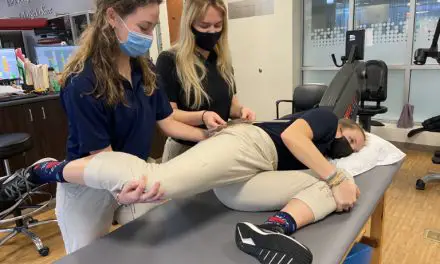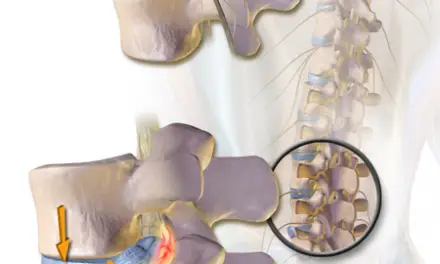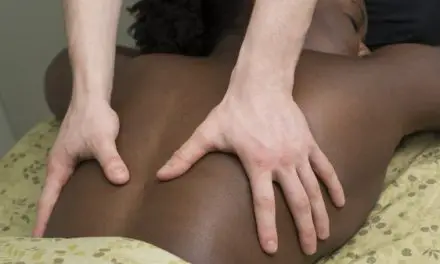Becoming an entrepreneur in massage therapy is somewhat different from other professions where you might see articles that advise you to become your own boss. While there are some overlaps in recommendations among different professions, this guide serves specifically for massage therapists.
When starting on your entrepreneurial journey:
- Ask yourself: what do you want to accomplish through your work? What are three important values that you would like your mission statement to convey?
- How much do you personally need to make to live and thrive? Everyone has a different financial goal to meet their needs, and the answer depends on your lifestyle and desired work environment.
- How many massages can you do and want to do per week? This can determine if you want to go full-time or part-time with your practice. Keep in mind that turnover time, cleaning time, and general prep time may need to be increased significantly to remain in compliance with COVID-19 era protocols.
- Do you want your practice to be like a spa, a medical clinic, or a hybrid of both? And what populations do you want to work with?
- Describe your massage style in five words or less. How do you stand out in the market without violating work ethics and scope of practice?
- Any business venture has risk, but when it comes to massage therapy, there are special considerations, particularly during COVID-19 era. Be financially and mentally prepared to pursue other career paths in case your business has to close due to ongoing state or national lockdown mandates or for other unforeseen circumstances.
Whether you are a new graduate from massage school or a massage “veteran,” you might be asking yourself what direction your career is headed, and how to use your talents in a way that makes you feel valued and also helps your prospective clients. At this point, I assume your knowledge base is solid and up-to-date with current evidence-informed practice.
As you consider more seriously the direction you want to take as a professional massage therapist, you need to get very clear on what your intentions are so that you can act from a place of true professional integrity.
How to start a massage business
Start with this simple but highly effective exercise that I like to call your “massage manifesto.”
Personal mission statement
As a massage therapist, what do you want to accomplish through your work? What are three important values that you would like your mission statement to convey?
For example: I want to offer excellent care. The three values that are most important for me to embody in my professional life and massage therapy practice are compassion, kindness and empathy (or whatever values that resonate with you personally).
Your personal values and mission statement might have shifted slightly since you discovered science-based massage practices. You expanded your knowledge base and polished your self-care practices.
As you continue to learn, your mission statement will also evolve. Revisit your mission statement regularly as you grow as a practitioner.
Personal financial budget
How much do you personally need to make to live and thrive? I can’t say enough how important it is to have clear awareness of your true personal monthly expenditures so that you can create an accurate financial picture.
After you determine how much you need each month, this will help you figure out exactly how much you need to make to meet your budget goals.
Be prepared with robust savings and alternative revenue or cash flow streams within your company (other than just massage) to help support you financially in case of further pandemic lockdowns or other unforeseen circumstances. Consider offering online services or other value pieces to diversify your massage business and boost income.
Output
How many massages do you think you can realistically do in a day, week, month, etc., and will this stay consistent?
Be sure to account for all time needed (turnover, cleaning, prep/supplies gathering, etc.) to work with a client. A “one hour” massage is actually more like 90 to 100 minutes of work if you’re including prep, cleaning, and check-in and check-out time.
Once you have an idea of how much massage you want to do, decide if you want that number to be “full time” or “part time.” This will help you in deciding whether massage would provide your sole income or if you will need to supplement with other income sources.
Work space locale
Are you healthcare-inclined or more drawn to a spa or wellness dynamic? When you see yourself doing a massage, what environment can you picture yourself in?
Think about what environments you might most prefer to work in: medical, spa, private homes, mobile massage, global spa tourism, corporate or athletic events, sports teams, etc.
Remember, the environment you desire to work in doesn’t necessarily dictate whether you will need to be employed or in private practice. It’s just a starting point to ask yourself leading questions.
Many massage therapists fled the industry during 2020, understandably so considering safety and risk factors. The economics of supply and demand are straightforward, and we’re currently seeing that play out within the massage therapy industry to a significant degree.
Since there are fewer therapists offering massage, and there is increased demand from clients to receive it, there are significant opportunities for new companies to capitalize on this moment from a business perspective. For those willing to put in significant time and effort, there are certainly gaps in the market that need to be filled, but be prepared to innovate!
Describe your massage style in five words or less
Expand your knowledge and use your creativity for this exercise. List five distinct words to describe your unique massage therapy presence.
For example, calming, restorative, focused, integrative, relaxing, compressive, rhythmic, etc.
After you finish the creative portion of this exercise, shift gears and research your area.
How densely saturated is your area already with other massage therapists or massage businesses?
If you live in a rural area, your employment options may be quite limited. If you are in a densely populated city, you may have an array of different opportunities but also have more competition to contend with.
Next steps in becoming an entrepreneur
With your manifesto in hand, you should have an idea of what direction you want to take and have thoroughly researched the geographic area you hope to work in.
Financially speaking, it’s very important that you have an idea of how much you need to make and stay within that budget.
This way you can gauge how many sessions you would need to perform per week to meet your financial needs and live within your means, while also filling a need in your marketplace.
This is something only you can determine, and everyone’s situation is unique.
A 2018 a career satisfaction study conducted by ABMP and Massagetablesnow.com offered the following:
“Out of the seven variables analyzed, inconsistent income was the factor that most negatively impacted job satisfaction. 51% of the survey respondents selected ‘extremely’ or ‘very’ to grade the impact a lack of consistent pay has on their overall career satisfaction.”
Also, a 2019 “state of massage therapy” study from AMTA found that 69% of massage therapists had a household income of more than $50,000 per year. That sounds significant, but depending on your location and cost of living budget, that may not be the case.
Consider these factors before you fly solo:
1. Don’t get stuck with massage as your only skillset to survive
Sometimes hands get injured, health circumstances shift, or “things happen,” like a worldwide pandemic. Have a savings account, set aside extra income for rainy days, and consider supplemental insurance to support you if something were to happen that made it difficult or impossible for you to practice massage.
After buying my current business, I stepped away from hands-on massage to focus on management and running a successful team of employees. Making that shift opened up an additional career path that includes educating, coaching, and consulting.
Having an extra skillset to focus on was instrumental to supporting me through the pandemic while we planned for reopening and what the next iteration of massage would look like for the company.
Some other “side hustles” that I heard include therapists who shift careers for or integrate into an existing business during the pandemic or because they needed a burnout break:
- Movement certifications (yoga, Pilates, personal training), with a focus on creating online coursework or classes;
- Other educational trade and/or certification programs (CPA, X-ray tech, medical billing, etc.);
- Local hourly positions at busy fulfillment centers like Amazon, Walmart, or Target.
2. Avoid entrepreneur burnout.
If you ever feel the slow creep of burnout, it’s time to start planning a hiatus or step back.
The worst thing you can do if you’re feeling massage burnout is to continue touching people in a therapeutic context if your heart is no longer in the work or your body does not feel like it has the stamina. In my case it was more of a stamina issue, so I knew I needed to take a break.
I am still fully licensed and occasionally give a hands on session, but I consider it more of a hobby and passion project. I am honored to continue to be able to offer therapeutic touch, as I believe that massage has the potential to be highly effective, interactive and healing experience when facilitated within the right environment and with ethical regard.
3. Entrepreneurship straight out of school
If you are someone who has a nest egg saved, or you have an entrepreneurial spirit, you may opt to go the private practice route straight out of massage school.
Keep in mind that starting a private practice is starting a business. They are the same. Even if you are the sole employee who is working at the business, it still deserves all the attention to detail and careful planning that any other successful business requires.
After all, a business that does not turn profit is essentially just a hobby, so think and plan carefully if your goal is to be a successful small business owner and not just someone with a massage hobby.
4. Business planning and systems
If you decide that you want to move forward, purchase a good business planner or software program that can assist you in organizing thoughts, taking notes, and creating a solid financial business plan for success.
The Small Business Association (SBA) offers some great tips on small business planning. You can also visit SCORE and download their free small business plan template.
Other business-related programs that I use that helped me with my success are Quickbooks by Intuit and MindBody scheduling software.
Quickbooks gives me excellent reporting so I can pull up a profit-and-loss or balance sheet report in a few seconds from my phone. No matter what bookkeeping software you use, know and understand how to read your profit-and-loss report, and keep an eye on it at least monthly!
MindBody offers diverse set up options for clinic owners, including extensive payroll reporting and an intuitive, personalized booking app for clients to create appointments.
If you don’t have an online booking platform for your clients, you’re wasting both time and energy. Focus on massage and let automated systems help support you. While MindBody lacks in some areas, like gift card balance tracking and less intuitive reporting, it makes up for it in other areas—particularly with regard to the client-facing pieces of the software—like the online scheduling app and gift card sales.
Taking the time to set up thoughtful, integrative tech systems that can support your business will help you stay on track with meeting goals and eventually booking your first appointment. Blind spots in your business can be the difference between profit and loss so don’t cut corners when it comes to things you may not be an expert in.
Although helping people is likely your primary motivation, it’s important to balance that with good business sense. This means educating yourself and getting coaching or advice in areas of vulnerability, this may include hiring an accountant, attorney, or business coach.
As you reflect on whether or not you want to move forward as a massage therapy entrepreneur, keep in mind some of the potential challenges that have been covered, but also remember it is perhaps one of the most unique and fulfilling careers available from a service and human connection standpoint.

Catie Morgan, BA, LMT
Catie holds a B.A. in Sociology from the University of Colorado and graduated from the Massage Therapy Institute of Colorado in 2007. After working in the spa and salon field, teaching, and then going on to private practice, she stepped away from full-time hands on work as a massage therapist. In 2013, an opportunity to move into a new role as owner and director of Amara Massage Therapy & Wellness in Fort Collins, Colorado, started a new journey and return home.
Catie also runs Evolve Coaching, a service that helps business owners develop leadership skills and people thinking about changing their career but don't know where to start.
In her free time, she loves working with rescued animals, watching stand up, gardening and enjoying the outdoors, as well as reading all things pain science and massage! She and her husband, Nathan, call Colorado home, and love spending time with their family, friends, and animals.






